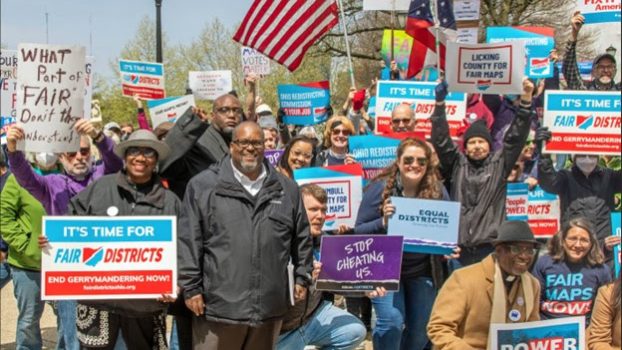Why Redistricting Matters

Gerrymandering Silences Underrepresented Communities. Fair Districts Ensure Their Voices Are Heard.
Redistricting, the ten-year cycle of reviewing, revising, implementing, and evaluating political district maps, shapes communities’ political representation for a decade. The extent to which communities are fairly represented in Congress and in their state legislatures profoundly influences policies and resources for education, health care, economic development, infrastructure, the environment, reproductive rights, gun control, and other areas. But due to a long and ongoing history of partisan and racial gerrymandering, redistricting too often results in maps that unfairly dilute the voting power of communities of color and deny them the chance to elect representatives accountable to their interests.

Gerrymandering’s long history in the U.S.
Gerrymandering has been a staple in American politics since the early 1800s, with each party adjusting political district maps to ensure that supporters of incumbents and the party in power comprise the majority in key districts, thereby ensuring victory at the polls. Gerrymandering has also often been used to consciously and systematically exclude people of color from the political process—and gerrymandering purely for partisan gain also often results in maps that represent communities of color unfairly. While the Voting Rights Act of 1965 forced changes, legislatures still regularly create gerrymandered maps that combine communities of color into as few districts as possible to diminish their voting power or divide those communities by spreading people out into many districts to dilute their voting power.

Coming out of the 2010 election, state legislatures drew hyper-partisan gerrymanders that locked in political control of the state legislative process, even where the party in power had received a minority of the popular vote. In 2013, the U.S. Supreme Court decision in Shelby County v. Holder eliminated one of the strongest barriers to racial gerrymandering. The decision undermined a key provision of the Voting Rights Act that had previously compelled certain states and localities with a history of discrimination to seek preapproval from the U.S. Department of Justice before implementing any change affecting voting, including adopting new redistricting maps. Eliminating such oversight meant that racial gerrymandering could more easily occur unchecked. Additional Supreme Court decisions left open the possibility for states to exclude non-citizens or non-voting age populations when determining how district lines are drawn, and concluded that partisan gerrymandering issues are political questions that cannot be resolved by the federal courts.
When voters lose their voice, communities pay the price
When the voting power of communities is diluted through gerrymandering, it not only undermines core democratic values, but becomes a modern-day form of voter suppression. It undermines community ownership; it makes it more difficult for candidates of color to be elected; it influences how resources are distributed; it changes access to health care and how schooling is provided; it shapes how police operate and how prosecutors and elected judges approach their work; and, more generally, it determines the extent to which communities have a voice in the decisions that affect their lives. Further, many also have linked gerrymandering to the notion that compromise in state legislatures and in Congress has become more challenging, adding to the problem of gridlock covering funding for human services programs, education support, gun control, and more.